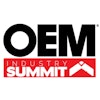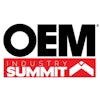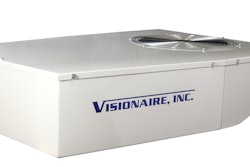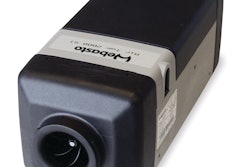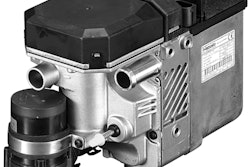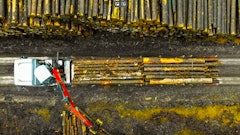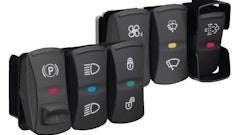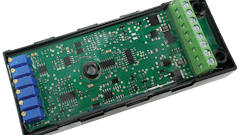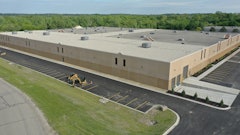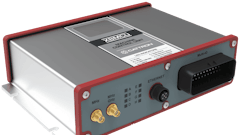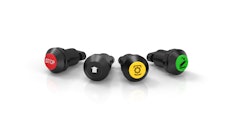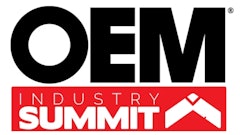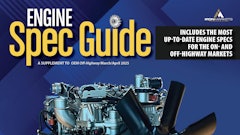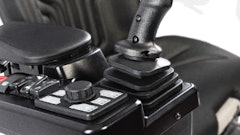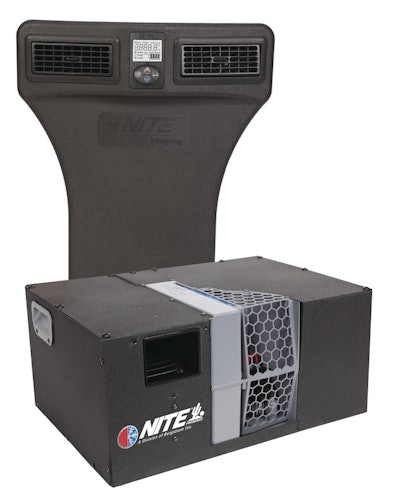
Heating, ventilation and air conditioning (HVAC) systems are an important part of ensuring the comfort and safety of equipment operators. With the implementation of emissions regulations and anti-idling laws over the past few years, manufacturers have had to rethink their methods for providing operator comfort, such as through the use of fuel-operated heater systems. “[The regulations] started forcing [an OEM’s] hand in putting products like ours into trucks to make up for the heat loss when the vehicle was shut down,” says John Dennehy, Vice President of Marketing and Communications at Espar Heater Systems, Mississauga, Canada. (Read more about Espar’s heaters being compliant with anti-idling laws at oemoffhighway.com/10815724.)
Fuel-operated heaters run on a small amount of fuel to provide operator cab heat while the engine is off. This ensures an operator can be comfortable during rest periods and still compliant with emissions regulations and anti-idle laws. It is also a cost-effective solution because the heater uses only a small fraction of a vehicle’s fuel supply. “When a typical 12 to 15 liter truck is idling by the side of the road, it burns 1 gallon of diesel fuel an hour at 900 rpm,” says Dennehy. “Our little bunk heater runs for 24 hours on that same gallon.” This equates to a 96% savings in both fuel and carbon emissions.
Due to their idle reduction capabilities, fuel-operated systems have been prevalent in the on-highway industry where anti-idle laws are the most common. However, as these laws continue to increase and move into other industries, so have fuel-operated systems. Don Kanneth, Director SPM Off-Highway/Defense at Webasto Product North America Inc.,Fenton,MI, says fuel-operated systems provide a tremendous opportunity for the off-highway industry to increase efficiency and save on operating costs. “Many machines experience as much as 50% annual idle time,” he says, “which equates to hundreds and even thousands of unproductive equipment hours, and thousands of dollars of fuel consumed for operator comfort and operational readiness.”
Engine off heating and cooling systems
Webasto’s engine off heating system runs on battery power and a small amount of diesel fuel from the vehicle, and can easily be integrated into a vehicle cab because it uses existing engine and HVAC coolant circuits to heat the operator cab. Along with the cab, the system also heats the engine block, hydraulic tank and other vehicle fluids to help ensure the vehicle will be ready for use. This is especially helpful in colder climates where operational readiness can be critical not only to productivity but also safety. “The battle that people operating in cold climates face is starting a diesel engine when it’s 30 degrees below zero, then pushing a coolant system to heat the operator cab, along with hydraulic tanks,” says Kanneth. With the fuel-operated heater, equipment operators can begin warming up the cab, engine and fluids half an hour to an hour before it’s time to begin working to ensure all of the equipment’s systems will function properly once the engine is turned on.
For warmer climates, Webasto has developed a regenerative cooling system called Aqua sphere II which stores cold energy then releases it into the cab when the engine is off. The system charges while the machine is running, using its own antifreeze and compressor for power. “We’re circulating super-chilled antifreeze, rather than moving refrigerant,” says Kanneth. “We can do this with very little power consumption when the engine’s off.”
The NITE engine off system from Bergstrom Inc., Rockford, IL, on the other hand runs solely on four deep-cycle absorbed glass mat (AGM) batteries to provide heating and air conditioning during rest periods, eliminating the need for engine idling. Unlike other types of batteries which provide a big burst of energy for a short period of time, AGM batteries are meant to be used for longer periods of time, run down and recharged once the vehicle is in motion again. “[The NITE system is] charging while the truck is going down the road and it is battery driven when the truck is at rest,” says Bill Gordon, Vice President of Sales Aftermarket at Bergstrom.
While the NITE system has been popular in the over-the-road market for several years now, John Bracey, Vice President of Engineering at Bergstrom, says the company is beginning to see more interest from the off-highway industry in using the NITE technology. Because the NITE product is a modular system, Bergstom has the building blocks necessary to adapt the system to heavier duty off-highway vehicles. “Some of the components would carry over,” says Bracy, “but how they’re housed, packaged and vibration isolated, and how tubes are supported would have to be done in a more robust manner in an off-highway environment.” He also notes the off-highway product would possibly need a larger operating temperature range to accommodate the extreme environments heavier duty equipment often works in.
Tier 4 and other challenges
Utilizing idle reduction HVAC systems is also important to the emissions control technologies being used to meet Tier 4 regulations. According to Webasto’s Kanneth, engine idling can shorten the life of emissions technologies such as diesel particulate filters (DPF). “When you start a cold engine, for example, you get a lot of additional soot and particulate matter that comes out of the exhaust system,” says Kanneth. “When an engine is pre-warmed with a fuel-operated heater, we greatly reduce the emissions that come out of the tailpipe or the engine exhaust system.”
Emissions control technologies have made the integration of HVAC systems more challenging as well due to the increased amount of heat being emitted underneath and into the operator cabs, and the use of diesel exhaust fluid (DEF). “In some cases to heat the DEF tanks they’re stealing some of the coolant flow, [which] affects heating and defrost performance,” says Bracey. To overcome these challenges, the entire HVAC system may need to be modified to maintain the necessary performance requirements. In addition other system components such as heater control valves and booster pumps have been redesigned to be more robust to better handle the higher system temperatures and pressures associated with emissions-control technologies. Making these redesigns is necessary to ensure proper flow of coolant so that a vehicle like a school bus will be heated or cooled from front to back.
Space is also becoming more of a challenge due to the increased amount of equipment required for Tier 4 compliance as well as other changes OEMs have been making to the operator cab, such as larger windows for increased visibility. “Availability of space and the cross sectional area for adequate air distribution are the two biggest challenges that we face,” says Bracey. HVAC manufacturers have had to find ways to decrease the size of their systems while still providing the necessary heating and cooling capabilities OEMs are looking to provide for their customers.
Dennehy says Espar has been working for several years to develop smaller, more efficient systems. These continuous development efforts have enabled the company to reach a point where its heaters are now the size of a loaf of bread and still capable of providing the heating properties customers are looking for. “We’ve increased the heat efficiency and we have reduced the size and parts on the heater,” he says.
In 2012, Visionaire Inc.,Grand Prairie,TX, released a low-profile air conditioning and heating combination unit which can be mounted onto the roof or wall of operator cabs (visit oemoffhigway.com/10753085 to learn more about this HVAC system). With an overall height of 8 inches, the unit can easily be placed into space-constrained cabs to provide heating and cooling for operators. “[The system] filled a gap in the market in that it doesn’t take up a lot of room on the vehicle, but it’s still a heavy steel, full power air conditioner,” says Bill Kerr, Vice President of Product Development at Visionaire.
To overcome the many challenges associated with the integration of HVAC systems, manufacturers say working with an OEM up front is the best solution. “Too often we aren’t called in until the vehicle design is almost complete, especially recently with the introduction of Tier 4 engines,” says Kerr. “We can usually save the OEM a lot of time and money if they involve us early in the process, so we don’t have to go in and reengineer the cab or work around their existing design.”
Working up front with an OEM is also necessary to ensure there is a good structure to mount the HVAC system to and help alleviate any potential noise, vibration and harshness (NVH) issues. With heavier duty equipment especially there is a lot of vibration causing metal-to-metal contact of components. By working together up front, an OEM and HVAC supplier can be sure the right NVH precautions are taken, such as occurred when Visionaire developed one of its wall mounted air conditioners. Visionaire mounted the system’s compressor on four vibration isolators which hold the mechanical components separate from the air conditioner, preventing any parts from coming in contact with the cab and creating NVH issues.
Continued improvements
Along with smaller and better performing systems, OEMs are looking for HVAC systems which last longer and require less maintenance. Bergstrom’s Bracey says the use of brushless motors has become more prevalent in the industry because of the increased lifespan they offer. As the main mover of air, the blower motor is one of the components requiring service in an HVAC system. Bracey says a brushless motor can provide anywhere from two to five times the life expectancy of a brushed motor, reducing the amount of maintenance that will need to be performed on the system.
How users interact with an HVAC system has been an area of continued development, as well. Bracey says automatic temperature controls have started to become the norm in the off-highway market, whereas just a few years ago they were not as prevalent. Users of the equipment want to be able to set the climate system and forget about it, and instead focus on the work in front of them. For the agricultural market automatic controls are an especially important feature because the operator is going back and forth in a field all day long and the orientation of the sun is constantly changing. Having to continuously adjust the temperature setting or blower speeds would inhibit the operator’s productivity.
Espar has developed control modules for its heaters which enable operators to control the heater when they are not in the vehicle (search 10655639 and 10655991 at oemoffhighway.com to learn more about the control modules). An operator can program the control module’s SD card on Friday afternoon to have the vehicle begin warming up Monday morning an hour before the operator arrives so that the vehicle will be ready to go as soon as he or she gets there. “[It] preheats the diesel engine and the cab space, making a comfortable environment for the operator,” says Dennehy.
Global demand for HVAC systems has been on the rise over the past several years as domestic and emerging markets have focused more and more on increasing operator comfort. It used to be that countries such asIndiaandChinadid not require HVAC systems in their equipment. However, as various parts of the world have become more developed, operator comfort has gained in importance. Bergstrom’s Gordon says more and more OEMs are including HVAC systems for the domestic and export markets they serve. “As countries get a middle class, you’re going to see more and more air conditioning,” says Gordon. “After 20 years we [theU.S.] have almost everything air conditioned here. And that’s going to be the same trend, we feel, globally.”
“Our customers, even in emerging markets, are realizing a cool operator is a safe and productive operator,” says Bracey.



